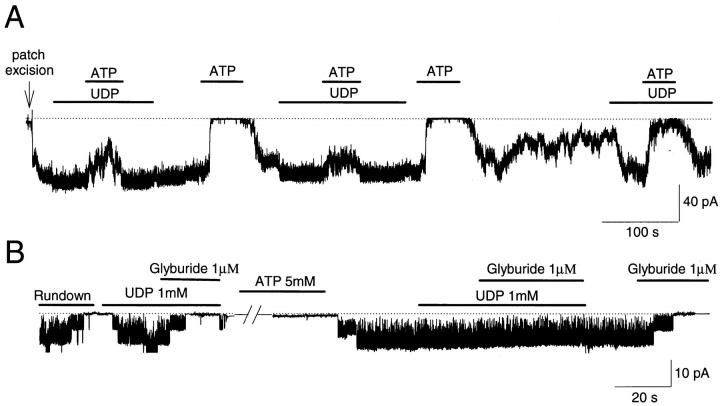Figure 4.
Dual responsive behavior of KATP channels, in the presence of UDP, towards ATP and glyburide. (A) After patch excision, KATP channel activity was vigorous and sustained at maximal level by UDP (2 mM), under which condition ATP (300 μM) produced only partial channel inhibition. Removal of UDP was associated with channel inhibition by ATP. Such effect was reproducible. With time after patch excision, KATP channel activity was observed to rundown. Under partial rundown, UDP enhanced channel activity, but only partially antagonized ATP- induced channel inhibition. The dotted line corresponds to the zero-current level. (B) Conversion of rundown to spontaneous KATP channel activity by Mg-ATP switches on the UDP-induced antagonism of glyburide-dependent channel block. A 10-min long pretreatment of rundown KATP channels with 5 mM Mg-ATP restored spontaneous channel activity and with it the UDP-induced antagonism of glyburide-dependent channel block lost in rundown channels. In the absence of UDP, channel activity was readily inhibited by glyburide. The dotted line with original trace corresponds to the zero-current level. nP o values, corresponding to the trace record, were calculated over 1.02-s-long intervals. Holding potential was −60 mV throughout.

